So...I've talked about Cottonmouths, and Scarlet Kingsnakes to-date. Now I'm gonna continue my overview of our herping experience with the amphibians we encountered.
Our main focus during the trip was snakes (at least mine was :) ), but we did make sure to take a few stops that were specifically devoted to amphibians.
One of our early stops on this trip was to a slow-moving stream. The riparian area (i.e. area associated with the stream banks) was mostly wooded. The stream bottom was silty with lots of organic matter (leaves, sticks, etc.). Access was easy, as we basically hopped out of the vehicle at a bridge over the stream...walked down to the water and drug a dipnet along the mucky bottom.
Above: habitat where we found the Lesser Siren and Dwarf Mudpuppy
Above: Jeff, Dave and Ed sifting through a dipnet haul for amphibians
It didn't take but one or two net hauls for us to pull up some pretty neat stuff!
Unfortunately, none of these pictures turned out incredibly well. Salamanders (especially aquatic salamanders) tend to wriggle alot when you take them out of that aqueous medium that they need to effectively breath.
Anyways, one of our grabs was a critter I had really wanted to see since moving here.
The Lesser Siren (Siren intermedia).
A unique little salamander that basically remains fully aquatic for its entire life, unlike many salamander species which have aquatic larvae (juvenile) stages and terrestrial adult stages. Because they are primarily fully aquatic, adults retain bushy external gills found in most larval salamanders. Yet, this species also has lungs, and is known to occassionally venture out onto land near the water's edge. The Lesser Siren is also unique among most native salamanders in that adults have only small front legs and no hind legs.
Lesser Sirens can be found in many aquatic habitats: slow moving streams, ponds, marshes, ditches, swamps, etc.. These must have plentiful aquatic vegetation and organic matter.
Lesser Sirens can be found in many aquatic habitats: slow moving streams, ponds, marshes, ditches, swamps, etc.. These must have plentiful aquatic vegetation and organic matter.
The next net haul revealed yet another species I had really wanted to see.
The Dwarf Mudpuppy or Dwarf Waterdog (Necturus punctatus).
Sorry for the poor picture, but this thing just would not hold still and we didn't want to keep it out of the water for too long. Anyways, in the state we have the Dwarf Mudpuppy and the Common Mudpuppy (Necturus maculosus). The Dwarf Mudpuppy is much more common than the Common Mudpuppy (confusing, I know). It's further confusing for me because back home in Wisconsin, we have Common Mudpuppys....so I'd seen those before. We don't have the dwarfs back home, however. So, I was very excited to see the Dwarf. Whereas the native folks from down here would probably have been more excited to see a Common Mudpuppy. To each his/her own!
These two species do not have overlapping geographic ranges in the state. The Common Mudpuppy only being found in a few drainage systems in the north east and the Dwarf found throughout the coastal plain. This means you can differentiate between these species by the geographic location of capture.
Of further interest is the fact that a third species of mudpuppy or waterdog is found in the state: The Neusse River Waterdog (Nectrurus lewisi). Although not as common as the Dwarf, the Neusse River Waterdog and the Dwarf overlap in their general geographic distribution. The Neusse River Waterdog being found in a few drainages within the lower Piedmont and the Sandhills....and its in a few spots in the Sandhills that it overlaps with the Dwarf.
Where they overlap, they can be distinguished in a few ways. The Dwarf is comparatively smaller...more slender in general body shape...and has relatively small spots on the body. The Nuesse River Waterdog has large bluish/black spots.
__________________________________________________________________
Another amphibian location we visited was an old over-flow spillway associated with a resevoir. We were hoping to find individuals of a currently undescribed species called the "Sandhills eurycea" (Beane 2010). Ed had seen a few there before and so we decided to check it out. The spillway, apparently, rarely has running water in it, but seems to remain damp. Over the years this ditch has also filled with organic debris (leaves, sticks, logs, etc.). A perfect haunt for amphibians. They fall into the spillway during migrations and have plenty of good cover and moisture. This spot usually isn't a "trap", per se. If they follow the spillway in one direction, or another, they can eventually find an exit out into the woods.
These two species do not have overlapping geographic ranges in the state. The Common Mudpuppy only being found in a few drainage systems in the north east and the Dwarf found throughout the coastal plain. This means you can differentiate between these species by the geographic location of capture.
Of further interest is the fact that a third species of mudpuppy or waterdog is found in the state: The Neusse River Waterdog (Nectrurus lewisi). Although not as common as the Dwarf, the Neusse River Waterdog and the Dwarf overlap in their general geographic distribution. The Neusse River Waterdog being found in a few drainages within the lower Piedmont and the Sandhills....and its in a few spots in the Sandhills that it overlaps with the Dwarf.
Where they overlap, they can be distinguished in a few ways. The Dwarf is comparatively smaller...more slender in general body shape...and has relatively small spots on the body. The Nuesse River Waterdog has large bluish/black spots.
__________________________________________________________________
Another amphibian location we visited was an old over-flow spillway associated with a resevoir. We were hoping to find individuals of a currently undescribed species called the "Sandhills eurycea" (Beane 2010). Ed had seen a few there before and so we decided to check it out. The spillway, apparently, rarely has running water in it, but seems to remain damp. Over the years this ditch has also filled with organic debris (leaves, sticks, logs, etc.). A perfect haunt for amphibians. They fall into the spillway during migrations and have plenty of good cover and moisture. This spot usually isn't a "trap", per se. If they follow the spillway in one direction, or another, they can eventually find an exit out into the woods.
Above: searching through the damp leaf-litter in the spillway for amphibians.
After a few minutes of searching, we found the "sandhills eurycea". Unfortunately, I didn't get any pictures worth posting. We also found a frog species that I had previously only seen in books: The Carpenter Frog (Lithobates = Rana virgatipes). I had heard them calling a few years ago when in Florida, but we hadn't been able to catch any at that time. So this was a real treat!
Above: a Carpenter Frog (Lithobates=Rana virgatipes) found in the habitat pictured previously
_________________________________________________________________________
In a previous post, I mentioned we visited a fish hatchery during this trip to the sandhills. We'd found a number of species there, including Cottonmouths (Agkistrodon piscivorus). The critters below were all found on hatchery grounds as well. The first one mentioned below was a new species for me: the Southern Cricket Frog (Acris gryllus). In our area of the Piedmont we have the Northern Cricket Frog (Acris crepitans), not the southern. Back home in Wisconsin a particular subspecies of the Northern Cricket Frog (the Blanchard's Cricket Frog; Acris crepitans blanchardi) is state Endangered and rarely seen. Because it is so rare, little is known about its ecology in the Upper Midwest. Its declining throughout much of the midwest for reasons not entirely known. In fact, some research manuscripts have actually referred to the decline of this species as "enigmatic"(Lehtinen and Skinner, 2006). Its even believed that populations of the Southern Cricket Frog have been steadily declining, when compared to reports of their historic abudance. As summarized by Jensen (2005a) a 1929 report mentioned that Southern Cricket Frogs were amazingly abundant in the southeastern United states. Jensen's review outlines several recent studies from the late 1990's and early 2000s that have found the number of breeding populations has substantially decreased in areas where they were historically high.
Still, most folks down here don't really bat an eye at finding them....but being from an area where they are rare....I'm always excited to find one.
Note in the examples below the presence of a "triangle" mark between the eyes. This is diagnostic for members of the genus Acris.
Above: an adult Southern Cricket Frog (Acris gryllus) found at the hatchery.
Above: for comparison, a Southern Cricket Frog found the next day at a different location. Note the slightly different color pattern
Above: a Northern Cricket Frog (Acris crepitans) that I captured in the Peidmont in 2010. It looks indistinguishable from the Southern Cricket Frog (for all practical purposes) and the two species are best differentiated by the breeding calls of the males.
Above: A Southern Toad (Bufo terrestris) found at the hatchery.
I'll round this out with pictures of an Eastern Red-Spotted Newt (Notophthalmus viridescens). Another very cool critter. This appears to be the terrestrial adult phase. This species has three phases: a fully aquatic adult that hangs out in emphemeral wetlands. It can remain aquatic indefinately, but should the wetland it calls home start to dry, it can become a terrestrial adult that lives on land.
There is also a terrestrial juvenile phase called a "red eft". Juvenile newts can remain aquatic until they become adults if the pond they live in does not dry. Should the pond begin to dry when the newt is still a juvenile, it will become a terrestrial "red eft" and live on land like many adult salamanders....and eventually become a terrestrial adult.
Whew!
This is an amazing survival mechanism and really highlights the plasticity in life history strategies that salamanders are capable of (how many critters can switch between fully aquatic and fully terrestrial lifestyles so willy-nilly?).
This is a species I am very familiar with from Wisconsin. Still love seeing them, though.
Above: an terestrial phase adult Eastern Red-spot Newt (Notophthalmus viridescens) found at the Hatchery.
Above: a terrestrial juvenile or "red eft" phase of the N. viridescens. This individual was not caught during our trip to the Sandhills, but in a drift fence at one of my study sites.
I STILL have a fair amount of stuff to share with you from our trip to the Sandhills! More to come soon.
_______________________________________________________________
Further Literature on the amphibians discussed above, see the following summative resources:
Beane, J.C., A.R. Braswell, J.C. Mitchell, and J.W. Palmer. 2010. Amphibians and Reptiles of the Carolinas and Virginia (second edition). University of North Carolina Press.
Braswell, A.R. 2005. Neuse River Waterdog, Necturus lewisi, Brimley 1924. In Amphibian Declines: the conservation and status of United States species. M. Lannoo (ed.). University of California Press.
Dundee, H.A. 2005. Dwarf Waterdog, Necturus punctatus, Gibbes, 1850. In Amphibian Declines: the conservation and status of United States species. M. Lannoo (ed.). University of California Press.
Husinger, T.W, and M.J. Lannoo. 2005. Eastern Newt, Notophthalmus viridescens, Rafinsque 1820. In Amphibian Declines: the conservation and status of United States species. M. Lannoo (ed.). University of California Press.
Lehtinen, R.M., and A.A. Skinner. 2006. The enigmatic decline of the Blanchard's Cricket Frog (Acris crepitans blanchardi): a test of the habitat acidification hypothesis. Copeia 2006:159-167.
Leja, W.T. 2005. Lesser Siren, Siren intermedia, Barnes, 1826. In Amphibian Declines: the conservation and status of United States species. M. Lannoo (ed.). University of California Press.
Jensen, J.B. 2005a. Southern Toad, Acris gryllus, LeConte 1825. In Amphibian Declines: the conservation and status of United States species. M. Lannoo (ed.). University of California Press.
Jensen, J.B. 2005b. Southern Toad, Bufo terrestris, Bonnaterre, 1789. In Amphibian Declines: the conservation and status of United States species. M. Lannoo (ed.). University of California Press.
Matson, T.O. 2005. Mudpuppy, Necturus maculosus, Rafinesque, 1818. In Amphibians Declines: the conservation and status of United States species. M. Lannoo (ed.). University of California Press.
Mitchell, J.C. 2005. Carpenter Frog, Rana virgatipes, Cope 1891. In Amphibians Declines: the conservation and status of United States species. M. Lannoo (ed.). University of California Press.
Petranka, J.W. 1998. Salamanders of the United States and Canada (first edition). Smithsonian Press.

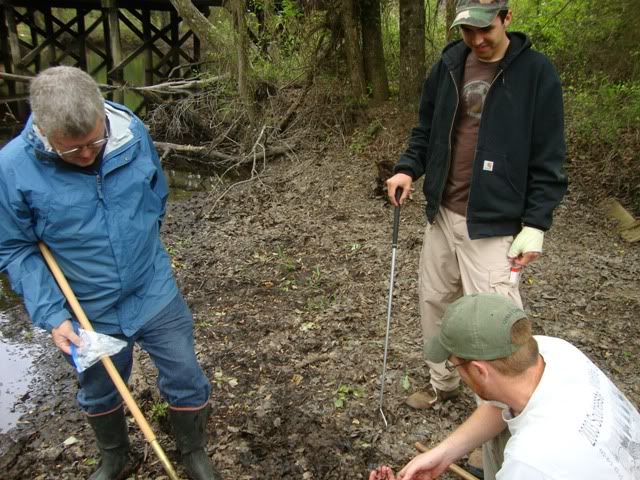

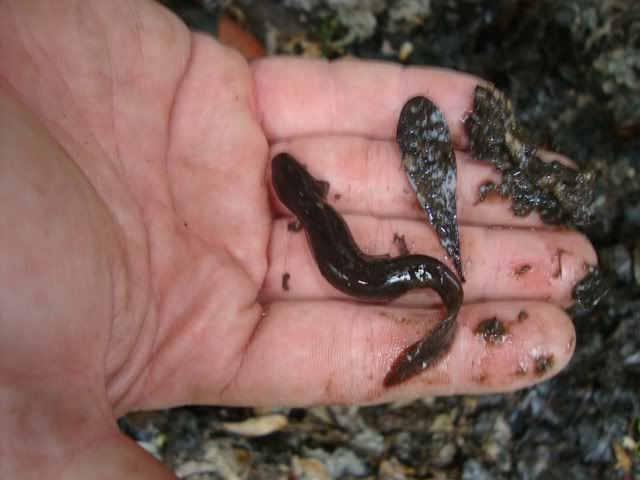

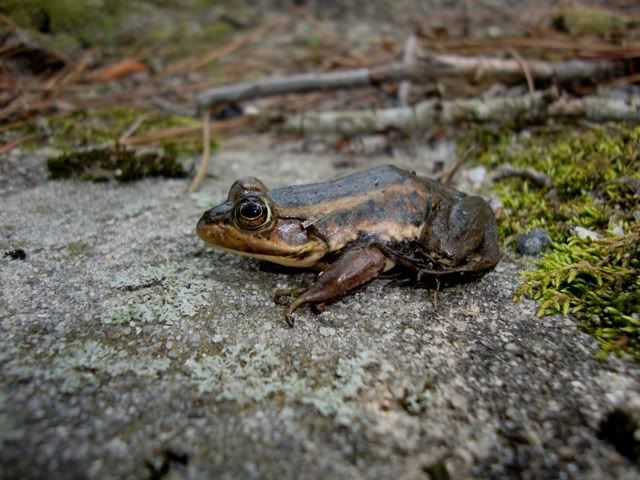
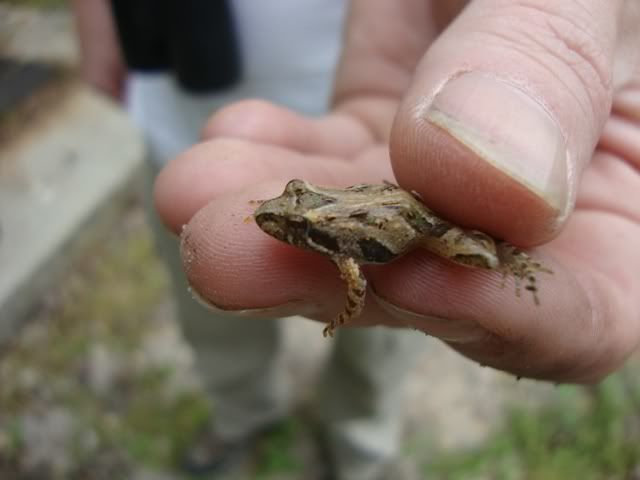

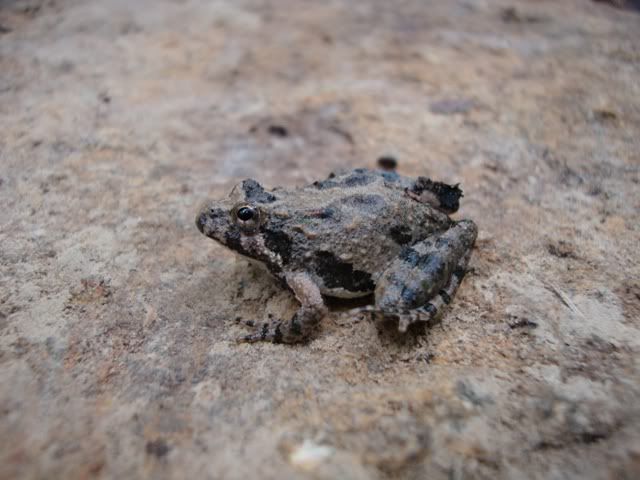

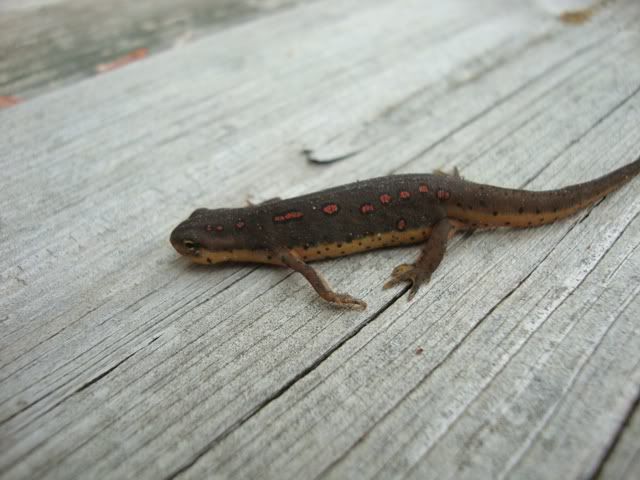
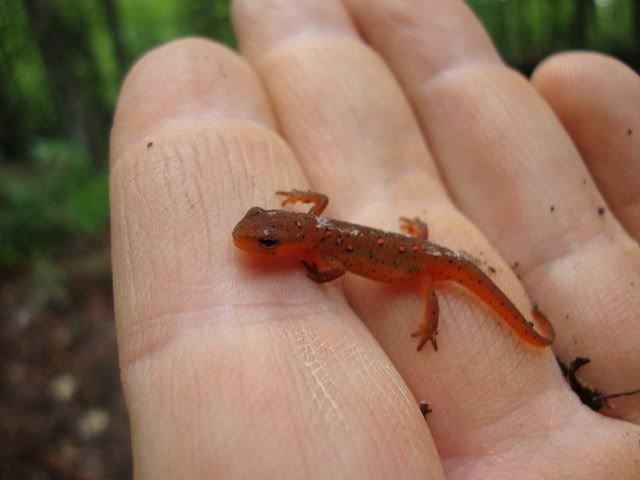
Wow, you've got a whole world of wildlife out there that I'm not familiar with. Great stuff.
ReplyDeleteGood herps. That red-spot newt is quite attractive, and would be fun to photograph.
ReplyDeleteThanks, guys!
ReplyDeleteRT...newts are fun to photograph!! The "red efts" can be much more brilliant than the one I posted above....check this out:
http://www.flickr.com/photos/jmays/3515828248/
Fascinating diversity of amphibians in your neck of the woods. I enjoyed reading about them.
ReplyDeleteThanks, Owlman!
ReplyDeleteYeah, the diversity of salamanders alone in the Appalachain Mountains can make one's head spin! We barely scratched the surface of what's in the Sandhills even on our trip.
Just wish I had more time to hunt for "stuff" and find them all. :)